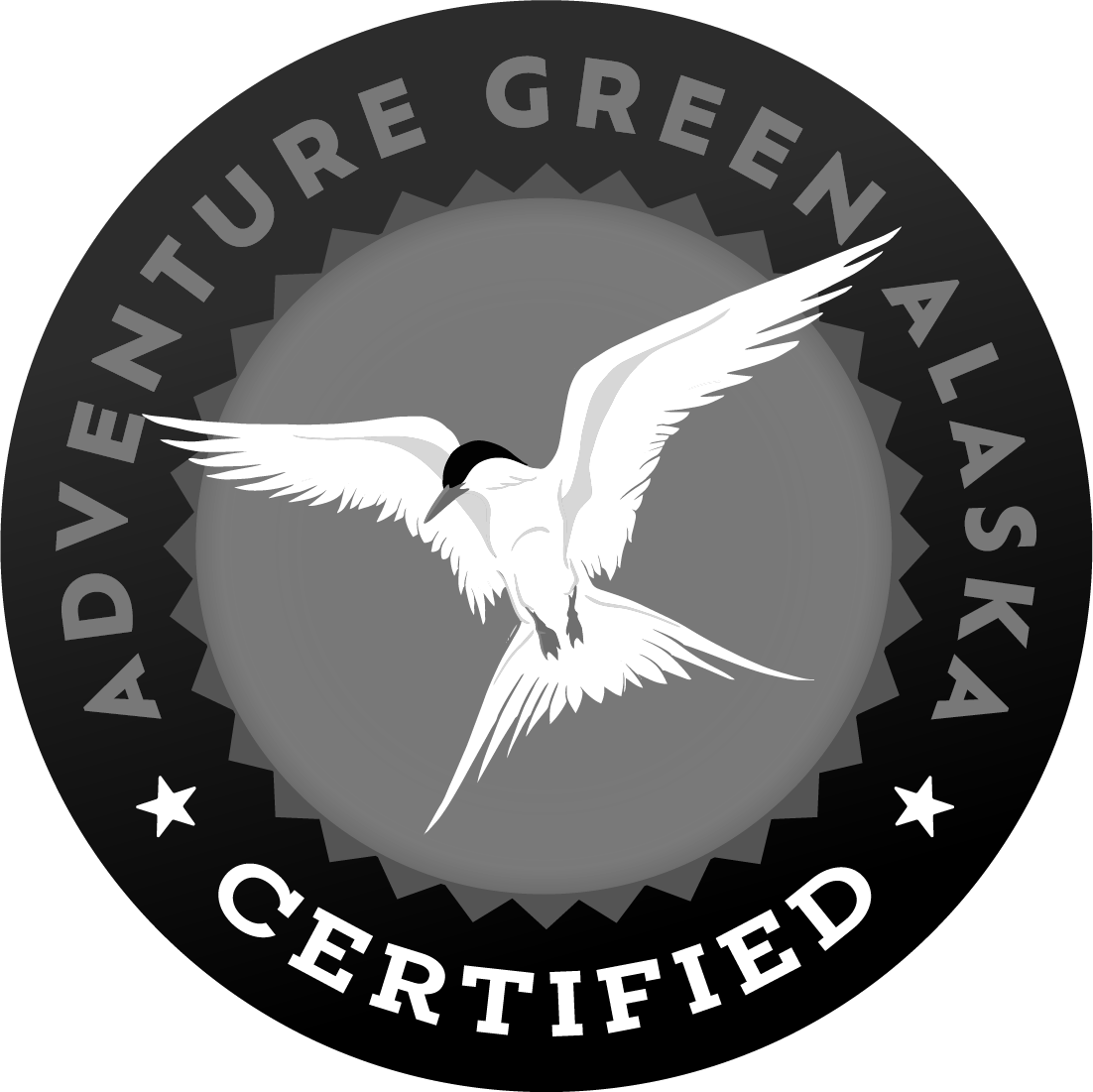As our bus noses around a corner on the Eielson Bluffs in Denali National Park, we catch a glimpse of an animal on the road up ahead. Passengers perk up, cameras and binoculars are readied. As we round another corner we get a clear look….a tan wolf, wearing a radio collar, is trotting down the road just ahead. A murmur of quiet appreciation rises. The wolf drops into the willows and pauses once, looking back, before disappearing.
Moments like these have been fewer in recent years. This spring the National Park Service counted 49 wolves in 11 packs, the lowest number of wolves since monitoring began 27 years ago. Why are there so few wolves? Will this trend continue? How might this affect their prey species?
Adolf Murie famously studied the wolves of what was then Mt. McKinley National Park in the 1920’s, and was one of the first biologists to show that healthy predator populations can actually increase the numbers of prey species such as dall sheep and caribou by culling the weak individuals out a prey population. The wolf packs in Denali typically feed on caribou, dall sheep, ground squirrels, voles, and on the Kantishna River (1,200 river miles from the ocean) even salmon. In 1986, an extensive wolf study was begun in the park after illegal killings of wolves took place in the western portion of the park. Aerial population counts since then have typically found around 100 wolves every year.
While prey availability, winter snow conditions, and other factors are known to affect wolf populations, another more politically sensitive reason may also have a contribution. Many of the wolf packs seen along the park road move northward into state land in the wintertime. They follow the caribou, which also migrate there for better winter foraging. Wildlife management practices on state vs. federal lands differs drastically. The State of Alaska manages populations for “maximum sustainable harvest” for humans, meaning they often curtail predator populations to artificially bolster prey species for hunters. The National Park Service, in contrast, manages populations to be “natural and healthy” thus typically applying a lighter touch. In the mid 1990’s portions of state land immediately outside the national park had a “buffer zone” placed on them that outlawed hunting and trapping of wolves. In 2010 the Board of Game removed the buffer zones against the desires of park scientists and many locals. Shortly thereafter the collared alpha female of the Grant Creek pack was legally harvested in the former buffer zone. This female had had have several litters, and was frequently seen by visitors along the park road since 2006, primarily in the Toklat area. With her death, the Grant Creek pack shrank in size. This year’s count estimates only three wolves in a pack that was formerly nearly 20 strong. The “buffer zones” will not be reevaluated until 2018.
What will happen in future years? Is the hunting and trapping pressure surrounding the park more than the wolf packs can withstand? State and federal management practices seem to be directly at odds when it comes to the wolf populations of Denali. One values human needs and economies, while the other aims to support natural predator and prey populations. What is the value of watchable wildlife? Denali has often been counted one of the best places to see wolves in the United States. Will it continue to be so?
So when we saw that wolf, dipping off the Eielson bluffs and down into the willows a few weeks ago, hope surged that a small piece of wilderness, representing so much, was still alive and free.






